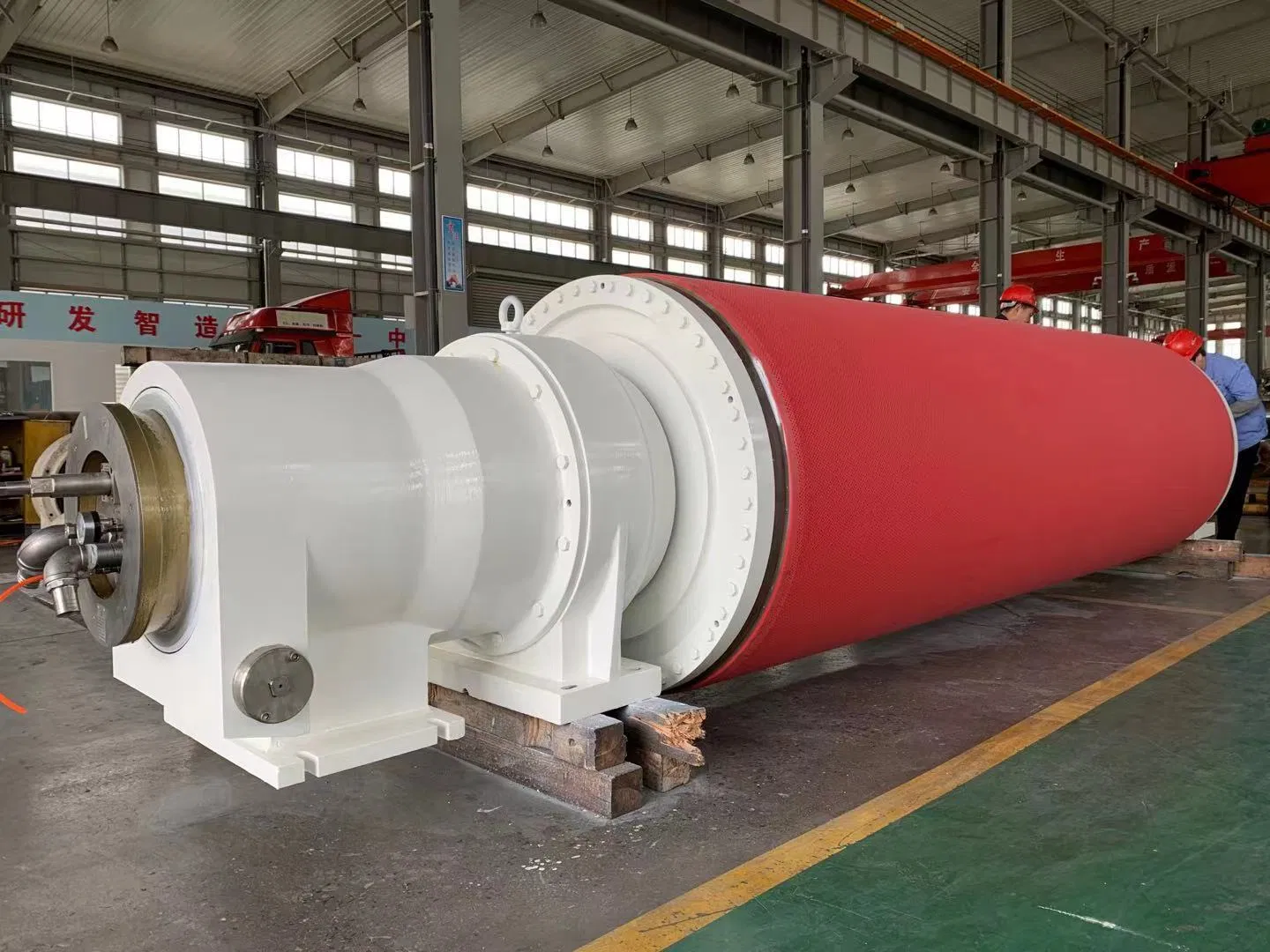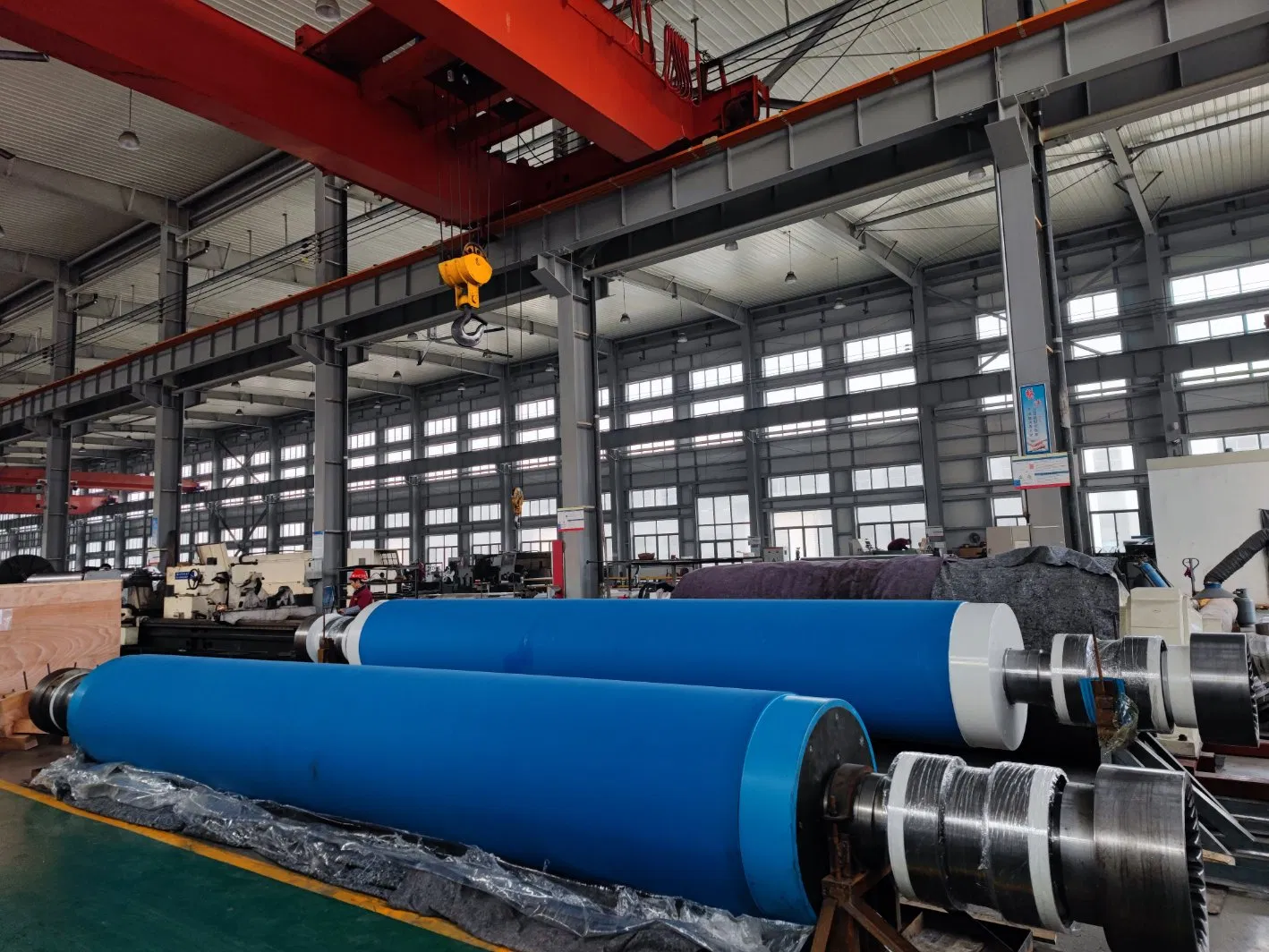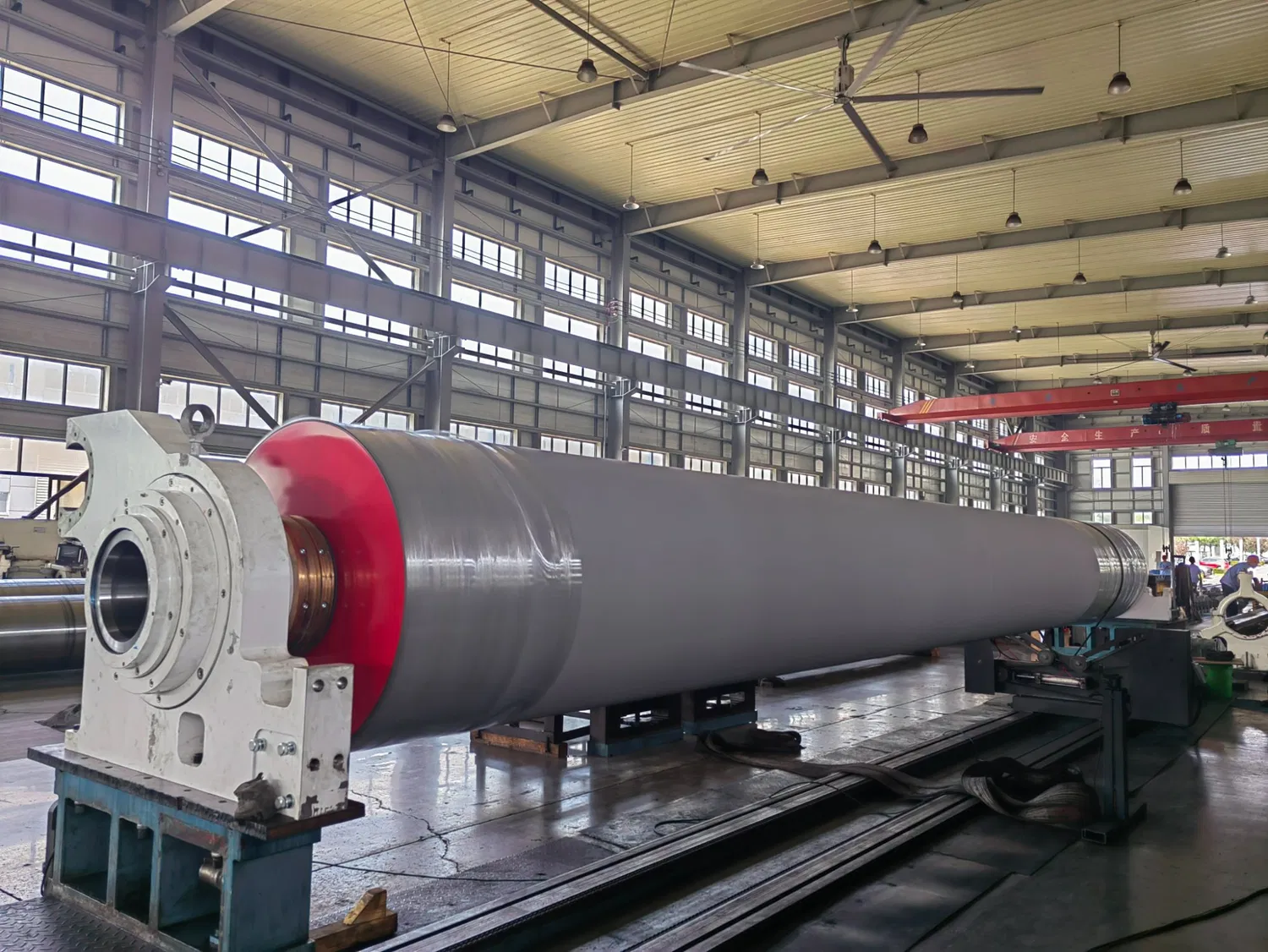Have you ever stopped to think about the incredible journey a sheet of paper takes from pulp to the crisp page you hold in your hand? It's a marvel of engineering, and at its heart lie components that often go unnoticed: the paper machine stone rolls. These aren't just any rolls; they are the unsung heroes, meticulously crafted to withstand immense pressure, heat, and continuous operation, playing a pivotal role in dewatering and pressing the paper web. Frankly speaking, without their precision and durability, modern papermaking as we know it simply wouldn't exist. The manufacturing process of paper machine stone rolls is an intricate blend of traditional craftsmanship and cutting-edge technology, demanding absolute precision at every stage.
In my experience, many people in the industry understand the function of these rolls but rarely delve into the "how" behind their creation. It's a fascinating subject, full of challenges and innovative solutions. From selecting the perfect raw materials to the final, painstaking quality checks, each step is critical. Let's embark on a journey to explore the complex steps involved in bringing these essential components to life, ensuring they perform flawlessly under the most demanding conditions.
Raw Material Selection and Initial Preparation: The Foundation of Durability
The journey of a paper machine stone roll begins long before any machining takes place, with the careful selection of its core material. Historically, many of these rolls were made from natural stone, predominantly granite, known for its hardness, wear resistance, and ability to hold a precise surface finish. However, as papermaking speeds increased and demands for specific properties evolved, composite materials have become increasingly prevalent. These composites often consist of a blend of natural stone particles, synthetic fibers, and advanced resins, engineered to offer superior strength, uniform density, and tailored porosity. To be honest, choosing the right material is paramount, as it dictates the roll's performance characteristics, including its ability to shed water, resist wear, and maintain dimensional stability.
Sourcing and Quality Control
When it comes to the raw materials for stone roll production for paper mills, quality control starts right at the source. For natural granite, quarries are meticulously vetted to ensure the stone possesses the correct geological properties, free from significant fissures, inclusions, or weaknesses that could compromise the roll's integrity under stress. Large blocks of granite, often weighing several tons, are extracted and then subjected to initial inspections. For composite materials, the individual components—resins, fillers, and fibers—are rigorously tested for purity, consistency, and specific performance attributes before they are even mixed. Many experts agree that this initial, stringent quality assurance is a non-negotiable step, laying the groundwork for a durable and reliable end product. Any compromise at this stage can lead to catastrophic failures down the line, which is simply unacceptable in a high-speed papermaking environment.
Initial Shaping and Core Preparation
Once the raw material, whether natural stone or composite components, passes the initial quality checks, the process moves to preliminary shaping. For natural granite, massive blocks are cut to approximate dimensions using large diamond wire saws or gang saws. This rough cutting is a delicate operation, requiring skilled operators to minimize waste and ensure the integrity of the stone. For composite rolls, the process involves preparing a metal core – typically high-grade steel – which will form the central shaft of the roll. This core is machined to precise tolerances, cleaned thoroughly, and often pre-treated to ensure optimal adhesion with the composite material that will be cast or wound around it. It's worth noting that the concentricity and straightness of this core are critical, as any deviation here will be magnified in subsequent stages and impact the final roll's balance and performance.

The Core of the Matter: Bonding and Curing Processes
With the raw materials prepared, the next critical phase in the manufacturing process of paper machine stone rolls involves creating the actual roll body by bonding the stone or composite material to the prepared metal core. This stage is where the roll truly begins to take shape, and its structural integrity is largely determined here. The techniques employed vary significantly depending on whether the roll is made from natural stone or a composite, but the underlying principle remains the same: achieving an incredibly strong, uniform, and void-free bond.
Adhesion Techniques
For natural stone rolls, the granite sections are typically bonded to the steel core using specialized epoxies or resins. This often involves segmenting the granite into rings, which are then carefully aligned and bonded around the core, or in some cases, a single large block is bored out and then bonded. The bonding agent must be capable of withstanding the operational stresses, temperatures, and chemical environments found in a paper machine. For composite rolls, the process is more akin to advanced material fabrication. The composite mixture—a precise blend of aggregate, binders, and sometimes fibers—is either centrifugally cast around the rotating metal core or applied through a filament winding process. Centrifugal casting ensures a dense, uniform material distribution, while filament winding allows for precise control over fiber orientation, enhancing strength and stiffness. I've found that the choice of adhesive or composite matrix is a proprietary secret for many manufacturers, honed over decades of research and development.
Controlled Curing Environments
Once the stone or composite material is bonded to the core, the roll enters the curing phase. This is arguably one of the most critical steps, particularly for composite rolls. Curing involves subjecting the roll to carefully controlled temperature and humidity conditions, often within large ovens or autoclaves, for an extended period. This process allows the resins or bonding agents to fully polymerize and harden, achieving their maximum strength and dimensional stability. The curing cycle can last from several days to weeks, depending on the roll's size and material composition. Precision in temperature ramp-up and cool-down rates is vital to prevent internal stresses, cracking, or delamination. Interestingly enough, improper curing can lead to microscopic voids or weak spots that might not be immediately apparent but could cause premature failure once the roll is in operation. Many manufacturers employ sophisticated monitoring systems to track every parameter during this phase, ensuring optimal material properties are achieved.
Precision Machining: Grinding, Turning, and Balancing
After the bonding and curing processes are complete, the raw roll blank, often still quite rough, is ready for the precision machining phase. This is where the roll transforms from a bulky cylinder into a perfectly dimensioned, balanced, and smooth component. This stage is absolutely crucial for the roll's performance, as any deviation in geometry or balance can lead to vibrations, uneven pressing, and ultimately, poor paper quality or even machine damage. The grinding and finishing paper machine rolls process is an art form in itself, requiring highly specialized machinery and expert technicians.
Rough Machining and Initial Shaping
The first step in machining is often rough turning or grinding. Large lathes or grinders are used to remove excess material and bring the roll closer to its final dimensions. For natural stone, this involves specialized diamond tooling capable of cutting through the extremely hard material. For composite rolls, carbide or ceramic tools might be used. During this initial shaping, the focus is on achieving a relatively uniform diameter and ensuring the roll is straight. It's a noisy, dusty process, but it's essential for preparing the roll for the subsequent, more delicate grinding operations. Tolerances at this stage are still relatively loose compared to the final product, but consistency is key to minimize the amount of material that needs to be removed in later, more expensive steps.
Precision Grinding and Surface Finishing
This is where the magic truly happens. The roll is transferred to highly accurate grinding machines, often equipped with computer numerical control (CNC) systems. Here, the roll is ground to its precise final diameter, taper, and crown (a slight curvature along its length designed to compensate for deflection under load). The surface finish is also developed during this stage. Different grinding wheels—made from various abrasives like silicon carbide, aluminum oxide, or even diamond—are used in a sequence of progressively finer grits. The goal is to achieve an incredibly smooth, uniform surface with a specific roughness (Ra) value, which is critical for water removal and preventing paper sticking. This process requires constant monitoring of temperature to prevent thermal expansion that could affect accuracy. Frankly speaking, achieving the required micron-level precision on rolls that can be several meters long and weigh many tons is a testament to modern engineering capabilities.

Dynamic Balancing for Optimal Performance
Once the roll has been ground to its final dimensions and surface finish, it undergoes dynamic balancing. This is a critical step to ensure the roll operates smoothly at high speeds without vibrations. Any imbalance, even a slight one, can lead to excessive wear on bearings, vibrations in the paper machine, and inconsistencies in the paper web. The roll is mounted on a balancing machine, which spins it at various speeds and uses sensors to detect any imbalances. Counterweights are then strategically added or material is removed from specific points on the roll's ends until the imbalance is reduced to an absolute minimum, often to within a few grams. In my experience, a perfectly balanced roll is essential for achieving high-speed, high-quality papermaking and extending the lifespan of both the roll and the surrounding machinery.
Surface Treatment and Finishing Touches
The precision grinding and balancing bring the roll to its final geometric state, but the surface itself often requires further specialized treatment to optimize its performance in the paper machine. This stage focuses on enhancing the roll's functional properties, such as its ability to interact with the paper web and manage water. The specific treatments depend heavily on the roll's intended position within the paper machine and the type of paper being produced.
Polishing and Honing Techniques
For certain applications, an even finer surface finish than what can be achieved through grinding is required. This is where polishing and honing come into play. Polishing uses extremely fine abrasive compounds or specialized polishing cloths to remove microscopic imperfections and achieve a mirror-like finish. Honing, on the other hand, is used to create a very precise, controlled surface texture, often with a cross-hatched pattern, which can be beneficial for specific dewatering or pressing applications. These processes are performed with extreme care, as they directly impact the roll's interaction with the delicate paper web. It's worth noting that the desired surface texture can vary significantly; some rolls require a very smooth finish, while others benefit from a slightly textured surface to aid in water removal or prevent slippage.
Specialized Coatings and Texturing
Beyond the inherent properties of the stone or composite, many paper machine rolls receive specialized coatings to enhance their performance. These can include rubber covers, ceramic coatings, or even tungsten carbide layers, each offering specific advantages. For example, rubber covers provide elasticity and can improve nip uniformity, while ceramic or tungsten carbide coatings offer superior wear resistance and can be textured for specific water removal characteristics. The application of these coatings is a highly specialized process, often involving thermal spraying, vulcanization, or chemical vapor deposition. After coating, the roll undergoes another round of grinding and finishing to achieve the precise dimensions and surface quality of the new layer. The complexity of composite stone roll fabrication often includes these advanced layering techniques, pushing the boundaries of material science to meet the ever-increasing demands of the papermaking industry.
Rigorous Quality Assurance and Testing: Ensuring Flawless Performance
The final, and arguably most critical, phase in the manufacturing process of paper machine stone rolls is the comprehensive quality assurance and testing. Even with the most advanced machinery and skilled operators, a finished roll must pass a battery of stringent tests to ensure it meets the exact specifications and will perform flawlessly under the demanding conditions of a paper machine. This isn't just about checking boxes; it's about guaranteeing reliability and preventing costly downtime for paper mills.
Dimensional and Geometric Inspections
Every aspect of the roll's geometry is meticulously checked. This includes its diameter along the entire length, ensuring it matches the specified crown and taper profile to within microns. Runout (how much the roll deviates from perfect concentricity when rotating) is measured with extreme precision. Straightness and parallelism of journals are also verified. These measurements are often performed using laser-based scanning systems or highly sensitive contact probes, capable of detecting the slightest deviation. The goal is to ensure that when the roll is installed and operating, it will maintain a consistent nip pressure across the entire width of the paper web, which is vital for uniform dewatering and sheet formation.
Material Integrity and Surface Quality Checks
Beyond dimensions, the integrity of the roll's material and surface is thoroughly inspected. Non-destructive testing (NDT) methods like ultrasonic testing or eddy current testing are often employed to detect any internal flaws, voids, or delaminations that might have occurred during the bonding or curing stages. The surface roughness (Ra value) is measured using profilometers to confirm it matches the required specification for optimal paper interaction. Hardness testing ensures the material has achieved the desired wear resistance. Visual inspections are also conducted under strong lighting to identify any surface imperfections, scratches, or inconsistencies. Many experts agree that these final checks are the last line of defense, catching any potential issues before the roll leaves the factory and is put into service.

Conclusion: The Art and Science of Stone Roll Manufacturing
From the initial quarrying of raw stone or the precise blending of composite materials to the final, meticulous grinding and rigorous quality checks, the manufacturing process of paper machine stone rolls is a testament to precision engineering and material science. These rolls, often hidden within the complex machinery of a paper mill, are truly the backbone of paper production, enduring immense forces and operating at high speeds to transform a slurry of fibers into the paper we use every day.
The evolution of this manufacturing process, driven by the continuous demand for faster, more efficient, and higher-quality papermaking, highlights a fascinating blend of traditional craftsmanship and cutting-edge innovation. It's a field where expertise, experience, and a relentless pursuit of perfection converge. The next time you pick up a book or jot down a note, perhaps you'll have a newfound appreciation for the unseen, perfectly crafted stone rolls that made it all possible.
For more detailed information, please visit our official website:Paper machine stone rolls
About the author: Dr. Alistair Finch is a veteran materials engineer with over 25 years of experience specializing in the design and manufacturing of industrial rolls for the paper and textile industries. Holding a Ph.D. in Composite Materials, his expertise lies in advanced fabrication techniques, surface engineering, and quality assurance protocols for high-performance components. He has consulted for numerous leading paper manufacturers globally, helping optimize their processes and extend the lifespan of critical machinery.


